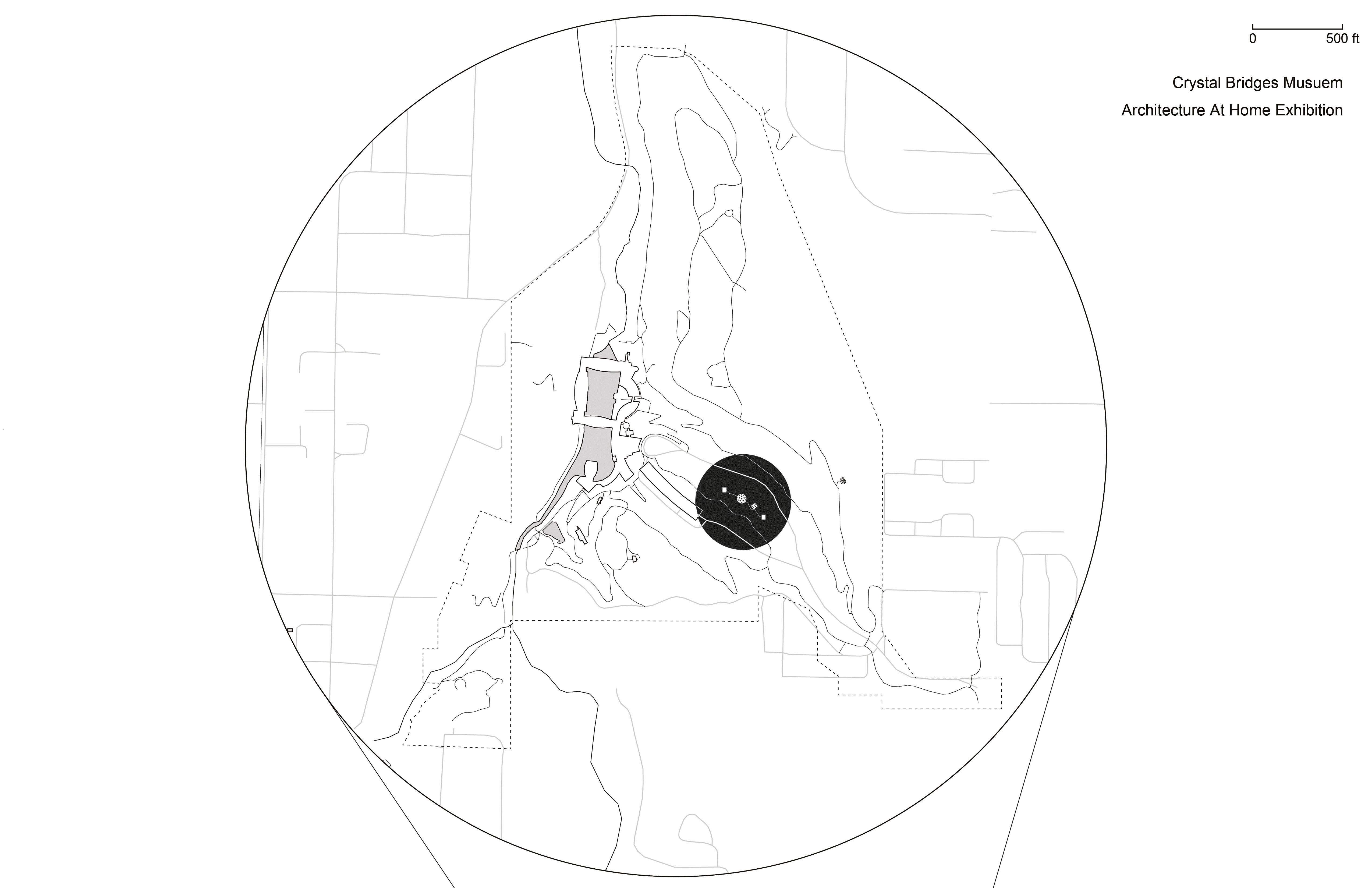
Totem House | Histories of Negation
One of five affordable housing prototypes that were comissioned by Crystal Bridges American Museum of Art for the Architecture At Home exhibition, the Totem House installation is multifaceted. The installation consists of four house components that imply both daily domestic activities and historic struggles of occupation at a site on the grounds of the museum.
The Totem House installation is a haunt of the design of an affordable 900sf 2-bedroom/1-bathroom house. The installation is also a haunt of the histories of settlement negations in Northwest Arkansas.
In the Totem House installation, the components of
the house occur as a grouping of totems or henges in the forest. As curious objects invested with meaning, they index narratives of use and place: use through the articulation of surfaces; and place through engravings on the surfaces. Totems, henges, and ruins haunt us with references to points beyond our frame of reference.
Histories of Negation
This body of research represents significant events and movements in Northwest Arkansas between 1750 and 2020. Crystal Bridges museum sits at the nexus of three historic trails: the Trail of Tears which marks the expulsion and deaths of Indigenous peoples, the Civil War and contraband trail of enslaved African American refugees drawn to the front by the prospect of freedom, and the trail of forced removals of African American communities that grew in the wake of emancipation.
The project traces the settlement of Indigenous nations and Africans in America and draws attention to parallels and overlaps. One overlap is the relationship of slavery and citizenship, Confederate treaties and Reconstruction treaties, and the cessions of Indigenous land and forced migrations. At the onset of the American Civil War, the Indigenous nations that held slaves signed treaties with the Confederate States of America for the protection of their people and land. Upon the defeat of the Confederacy, Indigenous lands were reassessed in a series of treaties drawn up by the new federal government during Reconstruction.
The Reconstruction treaties emancipated and gave citizenship to the slaves held by Indigenous nations. Some nations were more embracing than others and legal battles for recognition of the freedmen and women as citizens continues to this day. The treaties also opened the “frontier” for development by reapportioning land, displacing, and resettling people, and providing railroads the right-of-way through.
This process was essential to the founding of the American nation, its states, and cities. The in long views in this work reveal ways that the patterns and structures of the past link to and engender the present.